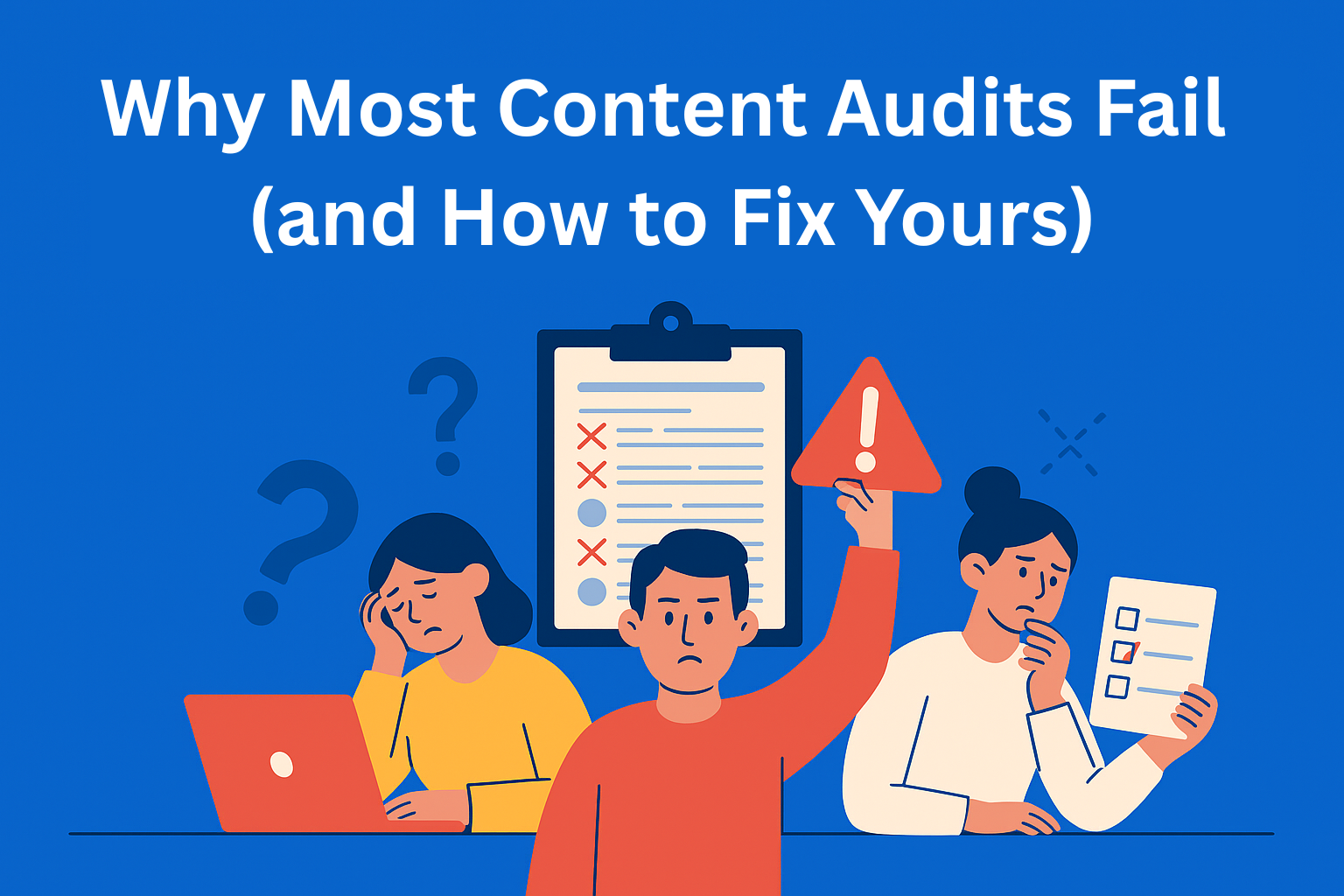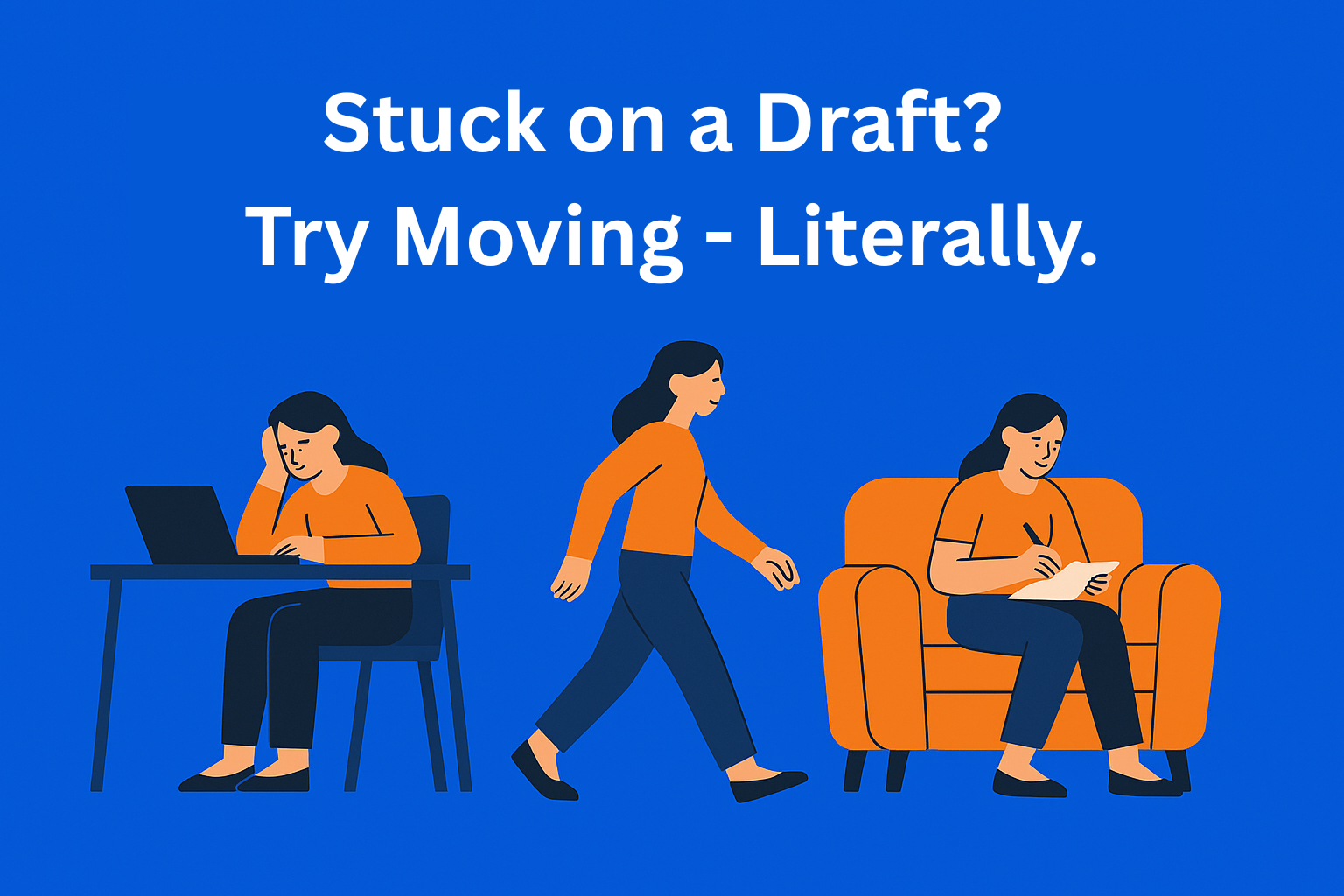The Real Reason Content and Design Teams Struggle to Work Together
Why do content and design teams clash? Different goals, different languages. But it doesn't have to be chaos. Learn how shared briefs, real collaboration, and unified workflows turn tension into teamwork.

Let’s get one thing straight: the tension between content and design teams is not new. It's been around since the first caveman tried to jazz up a wall painting while another grunted, "Actually, that's not the story I was going for."
In fact, sometimes it's hard enough for content teams to work with themselves. Add designers into the mix, and suddenly we have a whole new level of awkward. Designers see layouts, whitespace, and aesthetics. Content folks see tone, clarity, and messaging. Designers want impact. Writers want context. Cue the chaos.
And to be fair, it's not just the content folks struggling. Designers have their own vision, and it rarely includes squeezing a 500-word product description into a space made for a tweet.
So why exactly is it so hard for these two teams to get in sync?
Key Takeaways
- Content and design teams often clash due to different starting points and priorities.
- Designers think in layout and visuals, while content teams focus on clarity, tone, and messaging.
- Communication breakdown happens because both teams speak different creative languages.
- Misalignment usually stems from unclear ownership and handoff processes.
- Shared project briefs help sync expectations early in the process.
- Working in tandem, not sequentially, leads to better results and smoother collaboration.
- Establishing a shared workflow language ensures repeatable success across teams.
- Platforms like EasyContent make collaboration easier with roles, previews, and review flows.
- With the right structure, content and design can move like a well-coordinated team - not a tug-of-war.
3 Real Reasons Content and Design Teams Clash
1. Different Starting Points
Content teams often begin with ideas, stories, and messages. They think: "What are we trying to say?" Designers start with structure: "How should this look and feel?" It’s a classic chicken-and-egg situation. Should the copy follow the layout, or should the layout mold around the copy?
When neither team knows who's leading and who's following, everything stalls. Deadlines stretch, projects stall, and frustration builds.
2. They Speak Different Languages
"Can you make this pop more?" - A phrase that gives content folks cold sweats.
"Can we remove the hero image and just use text?" - A sentence that drains all color from a designer's face.
Designers talk in terms like typography, hierarchy, and balance. Content teams use words like tone, voice, and CTA. It's not that one side doesn't care about the other's craft. It's just that the communication gap makes alignment a challenge.
3. Misaligned Priorities
Content is often tied to strategy. SEO goals, messaging frameworks, campaign narratives - they all drive the words. Design, on the other hand, is about user experience, brand consistency, and visual engagement.
When deadlines loom, each team pushes their priority. Content wants space for subheads and detailed messaging. Design wants simplicity and focus. It becomes less about teamwork and more about defending turf.
3 Ways to Fix the Disconnect
Alright, enough negativity. Let’s get into what actually helps.
1. Start Projects with a Shared Brief
No, not the "here’s the folder, good luck" kind of brief. A real one. A brief that brings content and design together at the very start.
Make sure both teams understand the goal, audience, format, tone, and timeline. A good brief can prevent 90% of misunderstandings down the line. It gets everyone on the same page before a single line is written or a single pixel is placed.
2. Work in Tandem, Not Sequence
Content and design shouldn’t be handed off like a relay baton. They should evolve together.
Early wireframes should be influenced by content ideas. Initial drafts should respect layout constraints. Review cycles should include both teams.
This is where a platform like EasyContent shines. It lets you bring everyone into the same workspace, assign roles, set deadlines, and manage approvals without chasing emails or Slack messages. Designers can see content evolve. Writers can preview how the copy fits into the layout. Everyone stays in sync.
3. Establish a Common Workflow Language
Instead of everyone doing things their own way, build a shared workflow.
Use a common checklist for review. Define what "final" actually means. Decide who signs off on what, and when. And most importantly, give each team a say.
You can even set this up once in EasyContent as a custom workflow. That way, you don’t have to reinvent the wheel with every project. Everyone knows the steps. Everyone follows the same map.
Here’s what creating a workflow looks like in EasyContent. You can create a separate workflow for each project and easily assign roles and permissions for every step.
Final Thoughts: It’s Not That Hard
Here’s the thing: content and design teams don’t actually hate working together. They just hate the friction that comes with it.
But when you remove the misalignment, create a joint process, and give everyone the tools to collaborate in real-time? Magic happens. Projects run smoother. Quality goes up. Deadlines get met. People actually enjoy the process (imagine that).
So maybe the real reason content and design teams struggle to work together is simple: no one gave them a good way to do it. Now you have one.
Working together shouldn’t feel unnatural. With the right setup, it can feel more like a choreographed dance. One where content doesn’t trip over design’s feet, and design doesn’t storm off because content missed the dip.






